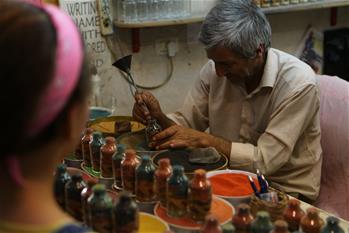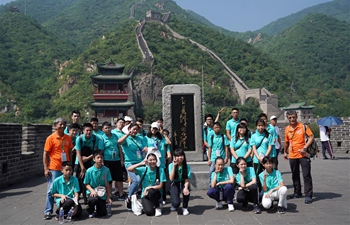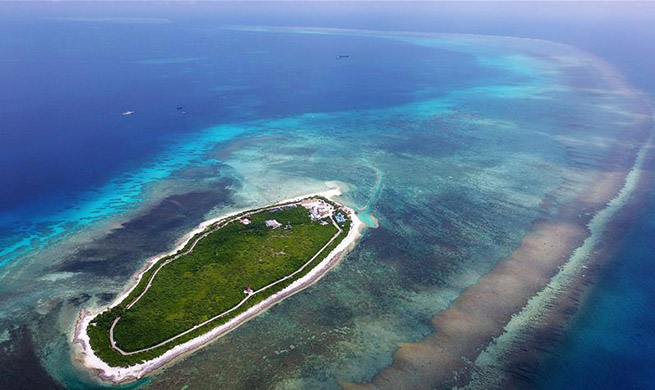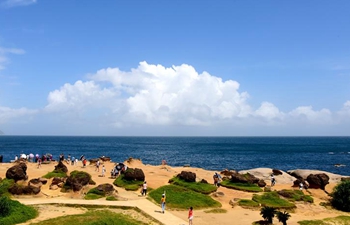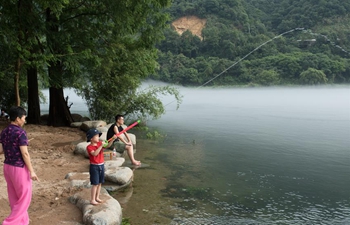by Ejidiah Wangui
Nairobi, July 22 (Xinhua) -- Four years ago, Elizabet Mada sat outside her mud hut that is located at the heart of Kenya's coastal county of Kilifi wondering what to feed her children who were about to return home from school.
She had used the last bit of corn flour they had been surviving on for the last one week on dinner the previous night. It would take a miracle for her to figure out where their next meal would come from.
Mada's only reprieve was the porridge served in school but this would mean the children would have to sleep hungry.
This was not the first time she found herself in such a dilemma and had gone through that experience on many occasions.
In fact, her home survived on food aid despite having some land that she tilled every year with the hope that rains would come.
Mada's attempt at keeping livestock flopped as the animals succumbed to starvation during dry seasons.
"One of the hardest moments in a mother's life is when you have children and you can't feed them, every single day of my life I wished I would die and stop seeing my children suffer, but again I imagined if I left them, they would suffer more. It was very painful having them back from school and telling them to go to bed hungry because I didn't manage to get food," said Mada.
The mother of five has however put all the tragic memories behind her. Lady luck knocked on her door one day and the barren land that refused to yield any food year in, year out, is now her sole source of food and livelihood for her family.
She is one of the farmers that benefited from a training on Conservation Agriculture by the United Nations Food and Agriculture Organization (FAO). Having put all the lessons she learnt into practice, Dama has confined hunger to dustbin of history.
Conservation Agriculture is a farming system that promotes maintenance of a permanent soil cover, minimum soil disturbance, and diversification of plant species.
The first thing that Mada did after the training was to put one acre of her land on green grams using the new method. She harvested 7.5 bags, which she sold making 750 U.S. dollars.
This was the first time she made so much money from farming, bringing home the life-changing opportunity of farming as well as the possibility of diversifying into cattle and goat farming.
From this initial harvest, Mada became confident in the efficacy of the farming method and went ahead to share the secret with other farmers.
Even though the farmers have been slow in adopting conservation agriculture, Mada increased her acreage and in 2017 when there was little rainfall, she earned 350 U.S. dollars from the little harvest, while her neighbors' crop failed.
Gabriel Rugalema, FAO Representative in Kenya, said that since a large area of Kenya's land mass is arid and semi-arid, depending on rain-fed agriculture means the country will never achieve its food security goals.
"We must look for ways to bring more and more of this vast area under cultivation. We can start by working on water harvesting techniques. For example, dry areas such as Turkana have a huge potential for farming but only lack water. The people in Turkana, have, however, to be trained on how to farm since this is new to them, Turkana has great potential yet it is the worst hit when drought strikes," said Rugalema.
He said that FAO advocates for Conservation Agriculture as it is easily adaptable and any farmer anywhere can practice it to increase yields.
"Simply put, conservation agriculture's greatest principle is little or no soil disturbance. A farmer uses mulch as a cover to conserve as much moisture as possible. Such mulch could be made of crop leftovers and this prevents topsoil full of nutrients from being carried away by wind, we also encourage use of organic manure as much as possible as well as crop rotation. These ensures that the different crops leave a variety of useful chemicals in the soil," said Rugalema.
Droughts and floods are expected to pose even greater challenges to Kilifi in coming years, as future projections predict increasing drought risk.
Poor infrastructure, limited coverage by extension services, poor quality and eroded soils, and low agricultural input use are some of the key factors that exacerbate the impacts of climate change and at the same time limit the ability of farmers and livestock keepers to cope with these impacts.
